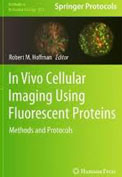In vivo cellular imaging using fluorescent proteins - Methods and Protocols

Submitted: 4 December 2012
Accepted: 4 December 2012
Published: 18 December 2012
Accepted: 4 December 2012
Abstract Views: 652
PDF: 374
Publisher's note
All claims expressed in this article are solely those of the authors and do not necessarily represent those of their affiliated organizations, or those of the publisher, the editors and the reviewers. Any product that may be evaluated in this article or claim that may be made by its manufacturer is not guaranteed or endorsed by the publisher.
All claims expressed in this article are solely those of the authors and do not necessarily represent those of their affiliated organizations, or those of the publisher, the editors and the reviewers. Any product that may be evaluated in this article or claim that may be made by its manufacturer is not guaranteed or endorsed by the publisher.

 https://doi.org/10.4081/ejh.2012.br14
https://doi.org/10.4081/ejh.2012.br14














